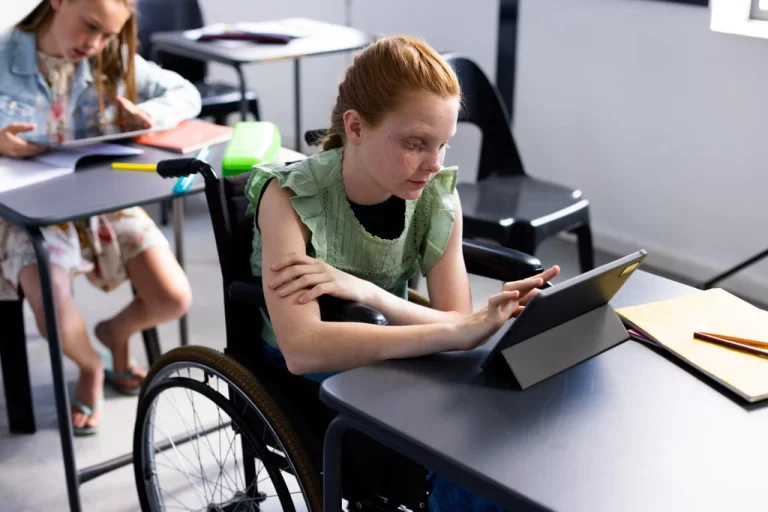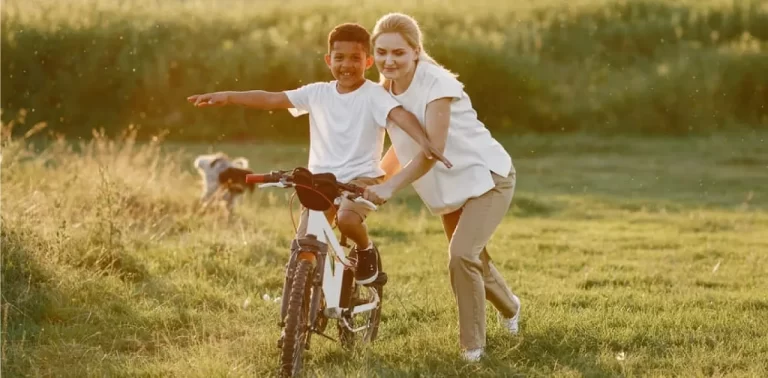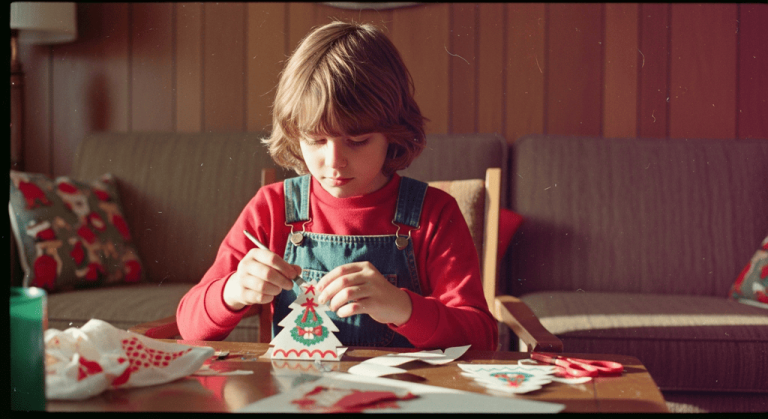A simple change in routine or plan can be challenging for both children and adults. Transitioning from one location to another, leaving the playground, or switching a school subject can all trigger unexpected emotional outbursts. For autistic children, or children with ADHD and learning disabilities, unexpected events can lead to emotional storms that may have a lasting impact.
The question is: how can we support a child or an adult who struggles with transitions?
In such situations, a transition-focused social story can be created to help people adapt to new routines or environments. By using clear, simple language and supportive illustrations, the story frames the change in a reassuring and positive way.
Learn more.
Definition and Purpose of Social Stories
A social story is a structured narrative that explains everyday situations, routines, or transitions in a way that is clear and predictable. Developed by Carol Gray in the 1990s, social stories often combine simple language with pictures or symbols to show what will happen, why it happens, and how the person can respond. They can be tailored to prepare people for experiences in different environments-from home and school to healthcare visits or community settings.
Purpose & Benefits
A transition social story is created to make changes in routine easier to understand. Supported with clear language and visuals, it prepares children for what is coming next, helps them know how to respond, and presents the transition as something safe and manageable. Over time, these stories can build confidence and reduce anxiety, making each new step feel less overwhelming.
Social stories are powerful tools because they:
- Reduce uncertainty and anxiety by presenting “what, when, where, and how” in a clear, predictable format
- Offer concrete cues for appropriate responses and strategies for coping
- Allow children to visualise the steps involved in a transition
- Strengthen self-regulation and confidence in handling change
- Serve as bridges between a child’s comprehension and the new expectations
Common Difficulties During Transitions in Health and Social Care
Transitions-whether small daily changes or major life shifts-can be challenging for people supported within health and social care. Moving between activities, environments, or care settings often disrupts routines and may trigger emotional, behavioural, social, or sensory difficulties. Understanding these challenges helps carers and professionals respond with empathy and effective strategies.
Even simple, day-to-day transitions such as moving from one activity to another, preparing for school or appointments, or shifting between staff members can feel overwhelming. These moments often highlight the need for structure, predictability, and reassurance to reduce stress.
Emotional Struggles
Transitions can stir strong emotional responses. Feelings of uncertainty or loss of control may lead to anxiety, which shows up as worry, restlessness, or withdrawal. Mood swings can also be common, ranging from sadness to irritability in short spans of time. For some people, these emotions can turn into emotional meltdowns, where overwhelming feelings are expressed intensely and often without the ability to self-regulate. Recognising these patterns helps carers prepare for and respond calmly to emotional distress.
Behavioural Struggles
Behavioural challenges are another common response to transitions. Some people may show refusal or resistance, avoiding the new activity or situation altogether. Others may display challenging behaviours when they feel pushed beyond their comfort zone. These behaviours are often expressions of unmet needs, stress, or fear, rather than acts of defiance. Support that validates these feelings while providing safe boundaries can make transitions less overwhelming.
Social Struggles
Transitions can also affect how people engage with others. Entering a new group, meeting unfamiliar staff, or adjusting to different social settings may cause withdrawal or heightened dependence on carers. Difficulties with communication and forming connections can increase feelings of isolation. In these moments, positive relationships and consistent support make a significant difference in helping people feel secure.
Sensory Difficulties
For many, transitions involve changes in environment that bring sensory challenges. Moving from a quiet space to a busy one may cause overstimulation, while unfamiliar settings can make it hard to adapt. Sensory sensitivities-whether to noise, light, touch, or movement-can intensify stress during transitions, making everyday changes feel overwhelming. Tailoring environments and using calming strategies can support smoother adaptation.
How Social Stories Facilitate Transitions
Social stories for transitions offer a simple and reassuring way to guide people through changes in their routines or environments. By presenting clear, step-by-step explanations of what will happen and how to respond, they reduce uncertainty, ease anxiety, and provide a sense of predictability. This structured approach makes transitions-big or small-more manageable and less overwhelming.

Preparing People for What to Expect During and After the Move
A transition social story that prepares someone for a move should include clear, concrete steps (e.g. “We will pack up our things,” “We will ride in a car to our new home,” “I will have my own room there”) as well as descriptions of what the new environment will be like-rooms, people, routines-to reduce ambiguity and build familiarity.
It is also beneficial to include visual supports like photos of the new house or maps, countdowns to the moving day, and coping strategies (e.g. “If I feel worried I can take deep breaths or tell someone”) within the story. Reading it repeatedly ahead of time gives the person the chance to process and ask questions, helping shift the unknowns into something understandable and manageable.
Transition Social Story: Moving to a New Home

Title page: I Am Moving to a New Home
Scene 1:
Soon, I will move from my current home to a new home.
This is something many people do in their lives.
Scene 2:
On moving day, people will help me pack my things into boxes.
My favourite items, clothes, and toys will come with me.
Scene 3:
We will travel together to the new home.
I might go by car or van. The journey may feel different, but it will be safe.
Scene 4:
When we arrive, I will see my new home.
It may look and feel different from my old home.
Scene 5:
Inside the new home, I will have a bedroom and space for my things.
I can make it feel comfortable by arranging it how I like.
Scene 6:
There may be new people to meet. They can become my neighbours, friends, or carers.
It might take time to get to know them, and that’s okay.
Scene 7:
Sometimes I may feel worried, sad, or excited about moving.
If I feel upset, I can talk to someone I trust or use a calming activity.
Scene 8:
My new home will become a safe place where I can live, rest, and do the things I enjoy.
Moving is a big change, but I will be supported every step of the way.
Reducing Anxiety by Providing Consistent, Predictable Information
Unexpected changes can heighten anxiety, particularly for children who rely on routine. Providing consistent and predictable information through social stories helps create a sense of safety and stability. By clearly outlining what will happen and when, these stories reduce uncertainty, support emotional regulation, and make transitions feel more manageable.
Familiarising with New Environments, Routines and People
Social stories are an effective way to introduce children to unfamiliar environments, routines, and people before they experience them in real life. Through clear language and relatable visuals, they offer a step-by-step preview of what to expect, helping children build familiarity and confidence. This gentle preparation eases the stress of new situations and supports smoother, more positive transitions.
Supporting Caregivers and Professionals in Communication
Social stories also support caregivers and professionals by providing a clear, structured way to communicate upcoming changes and expectations. They serve as a shared reference point, making it easier to explain transitions consistently and calmly. By modelling language and responses, social stories help adults guide children in developing coping skills, encouraging them to manage their emotions and navigate new situations with greater independence.
Types of Transitions Where Social Stories Help
Social stories support people through different kinds of change, from everyday routines to major life events. They can be particularly effective in moments like these:
Big Transitions
- Starting or ending a romantic relationship
- Becoming a parent
- Experiencing bereavement or loss
- Reaching milestone ages (e.g. 18, 30, 50)
- Living with a serious illness or recovering from injury
- Changing career or retiring from work
- Moving house or relocating to a new community
- Travelling or living abroad
- Community care transitions (e.g. transitioning from hospital into community support)
Everyday Transitions
- Daily routine changes (bedtime, mealtimes, school run)
- Moving from waking up to getting out of bed
- Finishing breakfast and getting dressed
- Leaving the house and starting the commute
- School-related changes (new teacher, moving class, assemblies)
- Switching between tasks or lessons during the day
- Shifting from school or work to home and relaxation
- Finishing dinner and starting the evening routine
- Putting away electronics and changing into pyjamas
- Winding down, preparing for sleep, and falling asleep
Examples of Social Stories for Common Transitions
Social stories can prepare people for both everyday routines and bigger life changes. They are often supported with visual schedules that make the steps of the transition easier to follow, and they can also be adapted to explain unexpected events. Common examples include going from playtime to classroom, visiting the dentist, preparing for a trip outside, moving to a new home, or starting with a new teacher. Each story turns uncertainty into clarity by showing what will happen and how to respond.
Going from playtime to classroom
A social story might use pictures of the playground, the bell ringing, and children walking in line. The text could explain: “When playtime ends, the bell rings. We line up with friends and walk to the classroom. Inside, the teacher greets us, and we sit at our desks ready to learn.” This helps children see the sequence and know what’s expected.
Visiting the dentist
Here, a social story could show the waiting room, the dentist’s chair, and the tools. It might say: “At the dentist, I sit in a special chair. The dentist uses a small mirror to look at my teeth. I might hear a buzzing sound, but it will not last long. Afterwards, I get a sticker and go home.” This gives reassurance and reduces fear of the unknown.
Preparing for a trip outside
A social story for an outing can include photos of the bus, a park, and coming back home. The text could read: “We are going on a trip. First, we pack a bag with water and snacks. We travel together on the bus. At the park, we eat, play, and explore. When the trip is finished, we go back home.” This provides structure, especially for children who may worry about leaving familiar spaces.
Catalyst Care Group Implements Social Stories in the Care Plans
At Catalyst Care Group, we understand that change-whether in daily routines or major life events-can feel overwhelming. That’s why we use social stories to make transitions clearer, calmer, and easier to manage for autistic people, people with ADHD, mental health needs, and learning disabilities. By turning uncertainty into structured, reassuring process, we help people feel more confident across home, school, and community settings.
Our approach combines evidence-based practices with digital creativity, ensuring each story is accessible, engaging, and relevant to the person’s world. This not only supports immediate understanding but also builds lasting skills for communication, independence, and emotional wellbeing.
In collaboration with families, local authorities, schools, and community services, we turn everyday challenges into pathways for growth-promoting improved communication, stronger self-confidence, and greater independence.
If you are looking for a support approach tailored to your loved one’s needs and delivered with expertise, compassion, and creativity– we are here for you.
To learn more, get in touch with us or make a referral.













